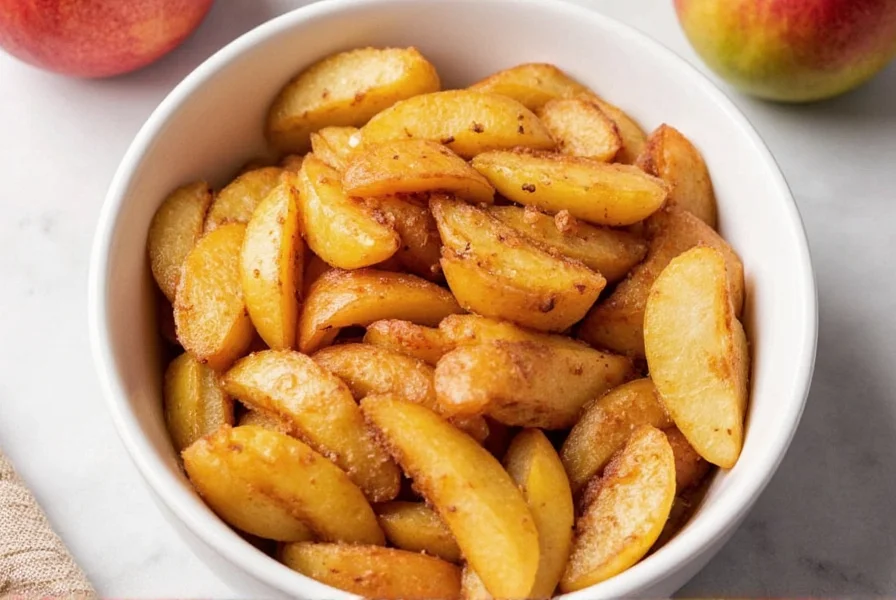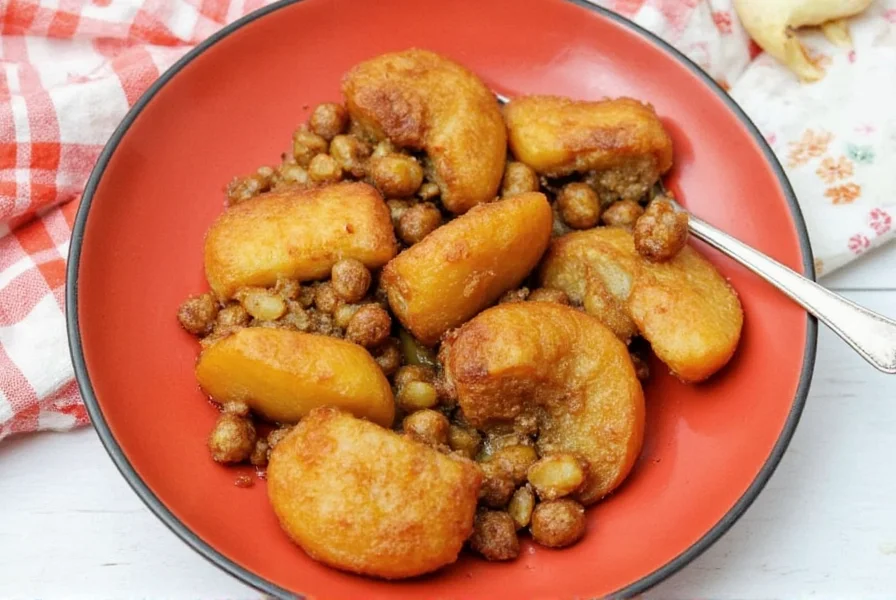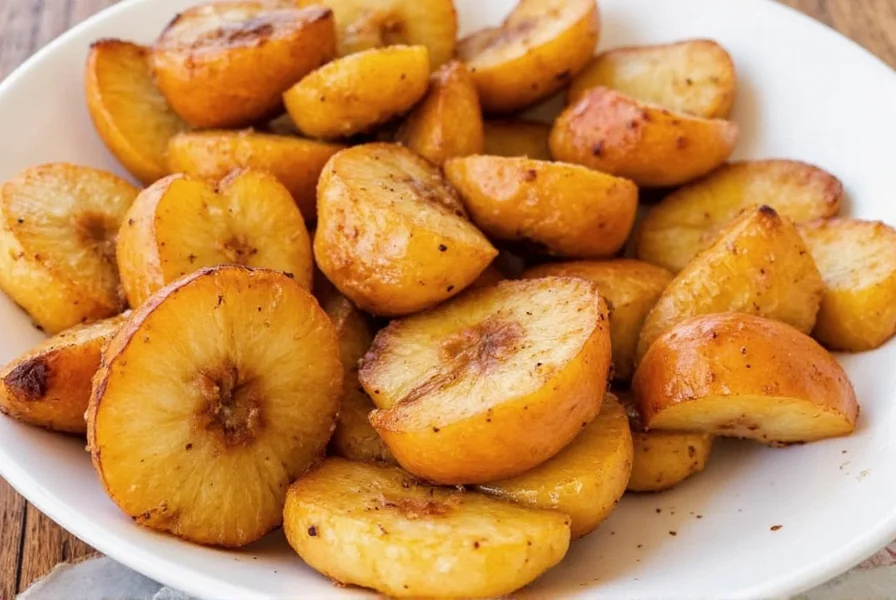Cooked cinnamon apples represent one of the simplest yet most versatile fruit preparations in home cooking. This classic recipe transforms ordinary apples into a warm, aromatic dish through gentle simmering with minimal ingredients. The natural sugars in apples caramelize during cooking, while cinnamon enhances their inherent flavor without overpowering it. Unlike many fruit preparations, this method preserves nutritional value while creating a dish suitable for multiple meals throughout the day.
The Essential Cooked Cinnamon Apples Recipe
Creating perfect cinnamon apples requires attention to ingredient selection and cooking technique. The following method produces consistently excellent results whether you're preparing a single serving or cooking for a crowd.

Ingredients for Perfect Cinnamon Apples
Yields: 4 servings | Preparation: 10 minutes | Cooking: 15 minutes
- 4 medium firm apples (Honeycrisp, Braeburn, or Granny Smith)
- 2 tablespoons unsalted butter
- 1–2 teaspoons ground cinnamon (adjust to taste)
- 1–2 tablespoons sweetener (maple syrup, honey, or brown sugar)
- 1–2 tablespoons water or apple juice
- Optional: pinch of nutmeg or lemon juice
Step-by-Step Cooking Instructions
- Prepare the apples: Peel (optional) and core apples, then slice into uniform 1/4-inch thick pieces. Uniform sizing ensures even cooking.
- Start the cooking process: Melt butter in a large skillet over medium heat. Add apples and liquid, stirring to coat.
- Add seasonings: Sprinkle cinnamon and sweetener evenly over apples. Stir gently to distribute.
- Simmer gently: Reduce heat to medium-low. Cook uncovered for 12–15 minutes, stirring occasionally, until apples reach desired tenderness.
- Adjust consistency: If mixture appears dry, add 1–2 tablespoons additional liquid. For thicker syrup, cook 2–3 minutes longer.
- Finish and serve: Remove from heat. Let stand 5 minutes before serving to allow flavors to meld.
| Apple Variety | Texture After Cooking | Sweetness Level | Best For |
|---|---|---|---|
| Honeycrisp | Firm-tender | Medium-high | All-purpose cooking |
| Granny Smith | Firm | Low (tart) | Balancing sweet recipes |
| Fuji | Softer | High | Reduced added sweetener |
| Braeburn | Firm | Medium | Balanced flavor profile |
Professional Tips for Perfect Cinnamon Apples
Mastering stovetop cinnamon apples requires understanding several key techniques that transform this simple recipe from ordinary to exceptional. These evidence-based cooking methods address common challenges home cooks face.
Apple Selection Matters Most
The choice of apple variety significantly impacts your final dish. Firm baking apples maintain structure during cooking, while softer varieties break down too quickly. For the best results when making easy cinnamon apple recipe preparations, combine two apple types—one firm (like Granny Smith) and one sweeter (like Honeycrisp)—to balance texture and flavor. This professional technique creates layered complexity in what might otherwise be a one-dimensional dish.
Temperature Control Is Crucial
Many home cooks make the mistake of cooking cinnamon apples at too high a temperature. The ideal method for how to cook apples with cinnamon involves gentle simmering rather than boiling. High heat causes apples to break down unevenly and prevents proper syrup development. Maintain medium-low heat throughout cooking to allow natural pectin to release gradually, creating a glossy coating without requiring cornstarch or other thickeners.
Timing Determines Texture
Cooking time directly affects the final texture of your cinnamon apples. For breakfast applications like topping oatmeal or pancakes, aim for 10–12 minutes of cooking time to maintain distinct apple slices. When preparing this as a dessert component, extend cooking to 15–18 minutes for softer texture that complements ice cream or whipped cream. The best way to make cinnamon apples for baby food requires even longer cooking (20+ minutes) to achieve complete softness.
Variations and Serving Suggestions
Cooked cinnamon apples offer remarkable versatility across multiple meals and dietary preferences. Understanding these applications helps maximize the value of this simple preparation.
Dietary Adaptations
This naturally gluten-free dish easily accommodates various dietary needs. For sugar-free versions of baked cinnamon apples instructions, omit added sweeteners entirely—the natural sugars in apples provide sufficient sweetness when properly cooked. Vegan cooks can substitute coconut oil or vegan butter for dairy butter without compromising flavor. Those following paleo diets appreciate this whole-food preparation that requires no processed ingredients.
Meal Integration Ideas
- Breakfast: Serve over Greek yogurt, oatmeal, or pancakes
- Lunch: Pair with pork chops or chicken for a balanced meal
- Dinner: Complement roast pork or poultry dishes
- Dessert: Top with vanilla ice cream or whipped cream

Storage and Reheating Guidelines
Proper storage maintains quality when making ahead. Cool cooked cinnamon apples completely before transferring to an airtight container. Refrigerate for up to 5 days. For longer storage, freeze in portion-sized containers for up to 3 months.
Reheat gently to preserve texture. On the stovetop, warm over low heat with 1–2 teaspoons of water or apple juice to refresh the syrup. In the microwave, use 50% power in 30-second intervals, stirring between加热. Avoid high heat which causes further breakdown of apple structure.
Common Mistakes to Avoid
Even simple recipes like stovetop cinnamon apples recipe can go wrong without proper technique. The most frequent error involves overcrowding the pan, which lowers the cooking temperature and causes apples to steam rather than simmer. Use a large enough skillet to allow single-layer cooking for optimal caramelization.
Another common issue when preparing healthy cinnamon apple dessert versions is under-seasoning. Cinnamon flavor diminishes during cooking, so professional chefs recommend using 25% more cinnamon than you initially think necessary. The aroma should be noticeable but not overwhelming.
Frequently Asked Questions
Can I make cinnamon apples without sugar?
Yes, you can prepare cinnamon apples without added sugar. Apples naturally contain sugars that caramelize during cooking. For sweeter varieties like Fuji or Gala, you may not need any additional sweetener. If using tart apples like Granny Smith, a small amount of sugar substitute or natural sweetener can balance the flavor without significantly increasing calories.
How do I prevent my cinnamon apples from becoming mushy?
To maintain perfect texture when making cooked cinnamon apples, use firm baking apples, cut them to uniform size, and avoid overcrowding the pan. Cook over medium-low heat rather than boiling, and check for doneness starting at 10 minutes. Remove from heat when apples are tender but still hold their shape. The apples will continue cooking slightly from residual heat after removal from the stove.
What's the best cinnamon to use for cooking apples?
Ceylon cinnamon (often labeled "true cinnamon") offers a more delicate flavor that complements apples without overpowering them. However, the more common Cassia cinnamon works well too and provides a stronger, familiar cinnamon taste. For the best results with either type, use freshly ground cinnamon when possible, as pre-ground cinnamon loses potency over time. Start with 1 teaspoon and adjust to taste during cooking.
Can I use this recipe for canning or preserving?
Yes, this basic cinnamon apples preparation works well for canning. When making canned cinnamon apples, increase the liquid slightly (add 1/4 cup apple juice) and process in a water bath canner according to current USDA guidelines. Use proper canning techniques to ensure food safety, including sterilized jars and correct processing times based on your altitude. The natural pectin in apples helps create a desirable texture in canned versions.











 浙公网安备
33010002000092号
浙公网安备
33010002000092号 浙B2-20120091-4
浙B2-20120091-4